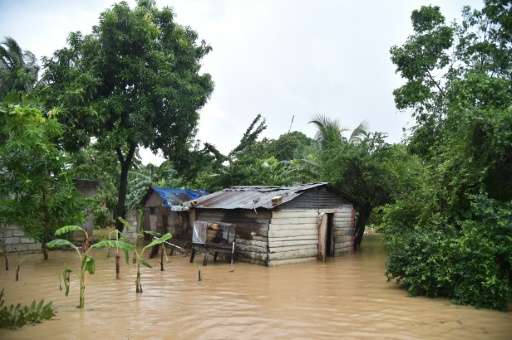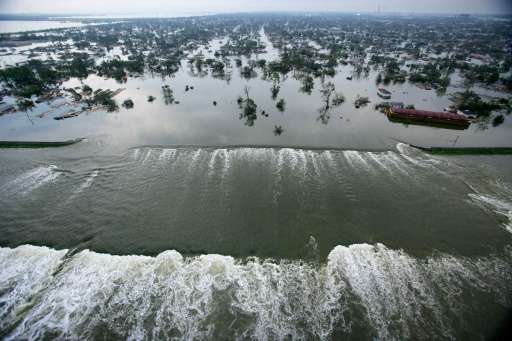What is a hurricane?

The Caribbean's worst storm in nearly a decade, Hurricane Matthew, has already killed at least nine people and was threatening the southeastern US on Wednesday.
Here are some key facts about hurricanes, which are very large and destructive storms that pack howling winds and lashing rains.
How hurricanes start
Hurricanes grow from tropical storms that form in the warm, humid air near the equator in the Atlantic Ocean and the Caribbean.
They are known as cyclones or typhoons in some corners of the world, such as the Indian Ocean and the Pacific.
When the surface water temperature reaches 26.6 degrees Celsius (79.9 Fahrenheit) it warms the air at the ocean surface which then rises, taking water in the form of vapour with it.
A low-pressure system causes the storm clouds to rapidly circle counterclockwise in the Northern Hemisphere or clockwise in the Southern Hemisphere.
An eye—a column of calmer air from eight to one hundred kilometres (five to sixty-two miles) wide—forms in the centre, sufficiently calm for birds to fly there.
Where do hurricanes go ?
Around 80 hurricanes, cyclones or typhoons form over tropical waters every year, worldwide.
The hurricane then follows an irregular path during which it can weaken or strengthen depending on the water temperature.

Hurricanes lose force when they move over land or colder waters, but often not before causing devastating damage from their violent winds and torrential rain.
When ?
Hurricane season extends from July to October in the North Atlantic and the Caribbean.
It runs from January to March in the southern hemisphere, while in the northwest Pacific and the northern Indian Ocean, typhoons and cyclones can strike all year-round, though mainly between May and October.
Some historic hurricanes
In the Atlantic, "Faith" travelled 12,500 kilometres (7,760 miles) in 1966, a hurricane's longest journey. In 1899, "San Ciriaco" lasted for 28 days, as did "Ginger" in 1971.
In August 2005, Hurricane Katrina was classed Category Three on Saffir-Simpson scale, a one-to-five rating based on a hurricane's sustained wind speed and the potential property damage. Katrina nonetheless devastated New Orleans and left at least 1,500 dead.
Torrential rains go side by side with winds stronger than 119 kilometres per hour (74 miles per hour) for Category One hurricanes and stronger than 252 kilometres per hour for Category Five.
Hurricanes that reach Category Three or higher—including Matthew—are considered major ones because of their potential for significant loss of life and damage.
© 2016 AFP



















